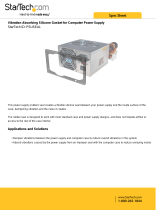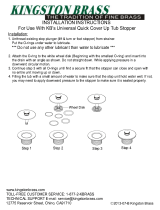CONTENTS
IOM manual Tapflo Metal Series 3
2.6. Actions in emergency .............................................................................................................. 16
3. MAINTENANCE ............................................................................................................................ 17
3.1. When the pump is new or reassembled ................................................................................. 17
3.1.1. Performance test .............................................................................................................. 17
3.2. Routine inspection ................................................................................................................... 17
3.3. Complete inspection ................................................................................................................ 17
3.4. Location of faults ..................................................................................................................... 18
3.5. Aluminium and cast iron – Disassembly of the pump .......................................................... 19
3.5.1. Before the disassembly procedure ................................................................................. 19
3.5.2. Disassembly procedure .................................................................................................... 19
3.6. Aluminium and cast iron – Assembly of the pump ............................................................... 21
3.6.1. Test run ............................................................................................................................. 22
3.7. Stainless steel – Disassembly of the pump ............................................................................ 23
3.7.1. Before the disassembly procedure ................................................................................. 23
3.7.2. Disassembly procedure .................................................................................................... 23
3.8. Stainless steel – assembly of the pump .................................................................................. 25
3.8.1. Test run ............................................................................................................................. 26
4. OPTIONS ....................................................................................................................................... 27
4.1. Drum pump – TD… .................................................................................................................. 27
4.2. Twin connections – TT… .......................................................................................................... 27
4.3. Filter press pump – TF… .......................................................................................................... 28
4.4. Barrier pump – TB… ................................................................................................................. 28
4.4.1. Guardian calibration procedure .......................................................................................... 29
4.5. Ball lifters – TL… ....................................................................................................................... 29
4.6. Pump with integrated pulsation dampener – TXK…............................................................. 30
5. SPARE PARTS ................................................................................................................................ 31
5.1. Aluminium and cast iron pumps............................................................................................. 31
5.1.1. TX25 - Spare parts drawing ................................................................................................. 31
5.1.2. TX25 – Spare parts list ......................................................................................................... 31
5.1.3. TX70-TX420 – Spare parts drawing .................................................................................... 32
5.1.4. TX70-TX420 – Spare parts list ............................................................................................. 33
5.1.5. TX70-TX420 – Spare parts - Options .................................................................................. 34
5.1.6. TX820 – Spare parts drawing .............................................................................................. 36
5.1.7. TX820 – Spare parts list ....................................................................................................... 37
5.2. Stainless steel pumps ............................................................................................................... 38
5.2.1. T70 – T120 - Spare parts drawing ....................................................................................... 38

























